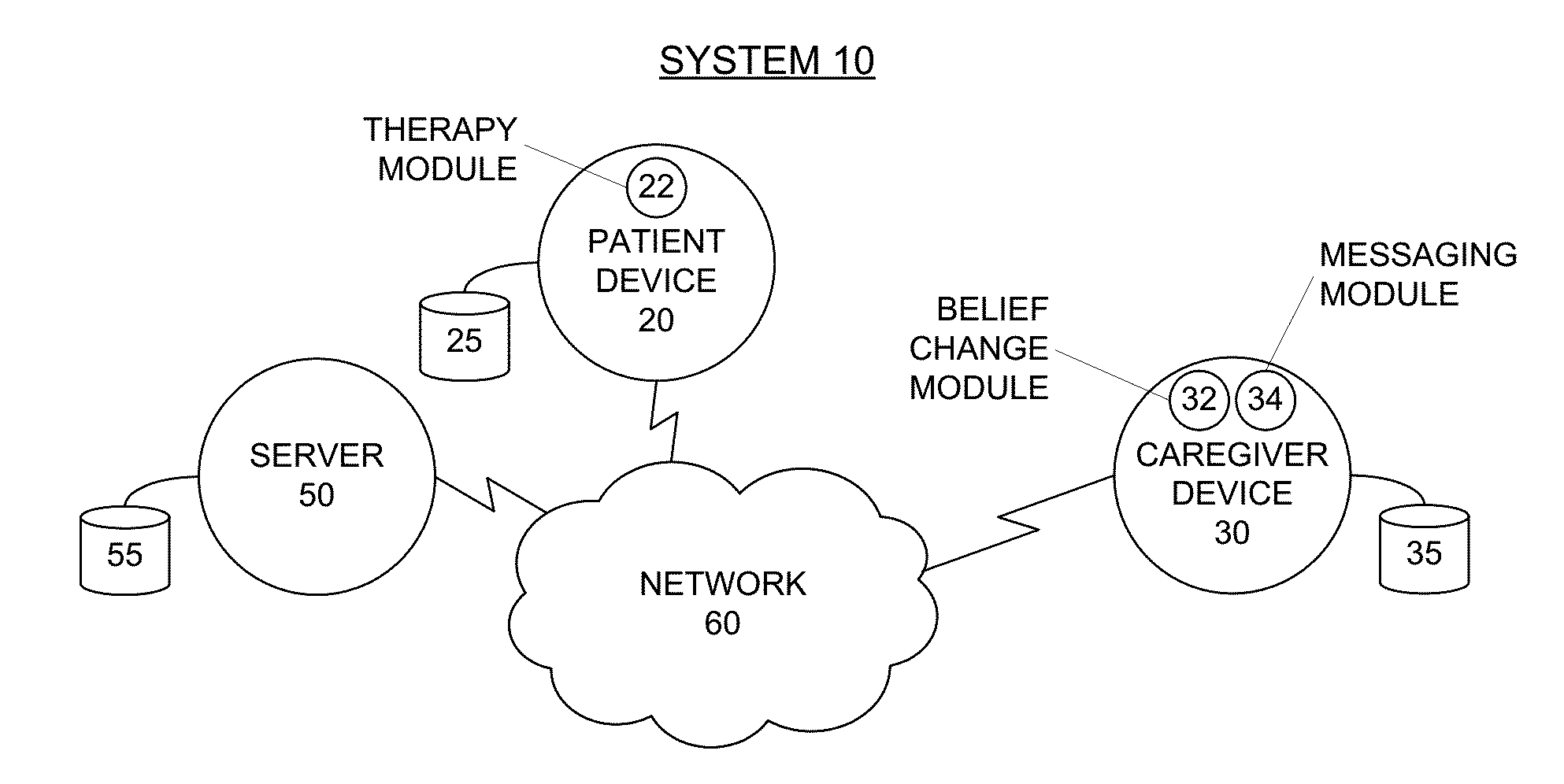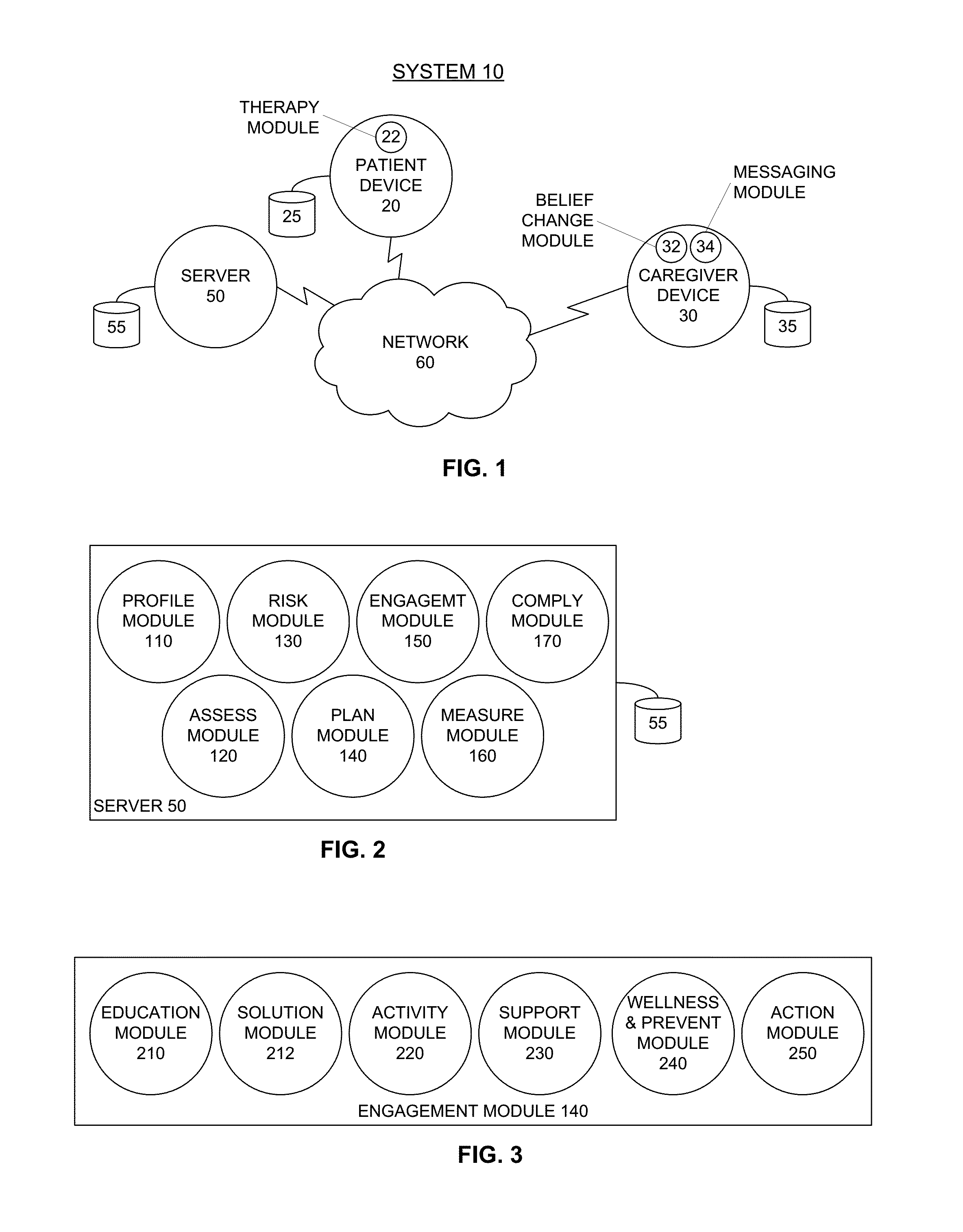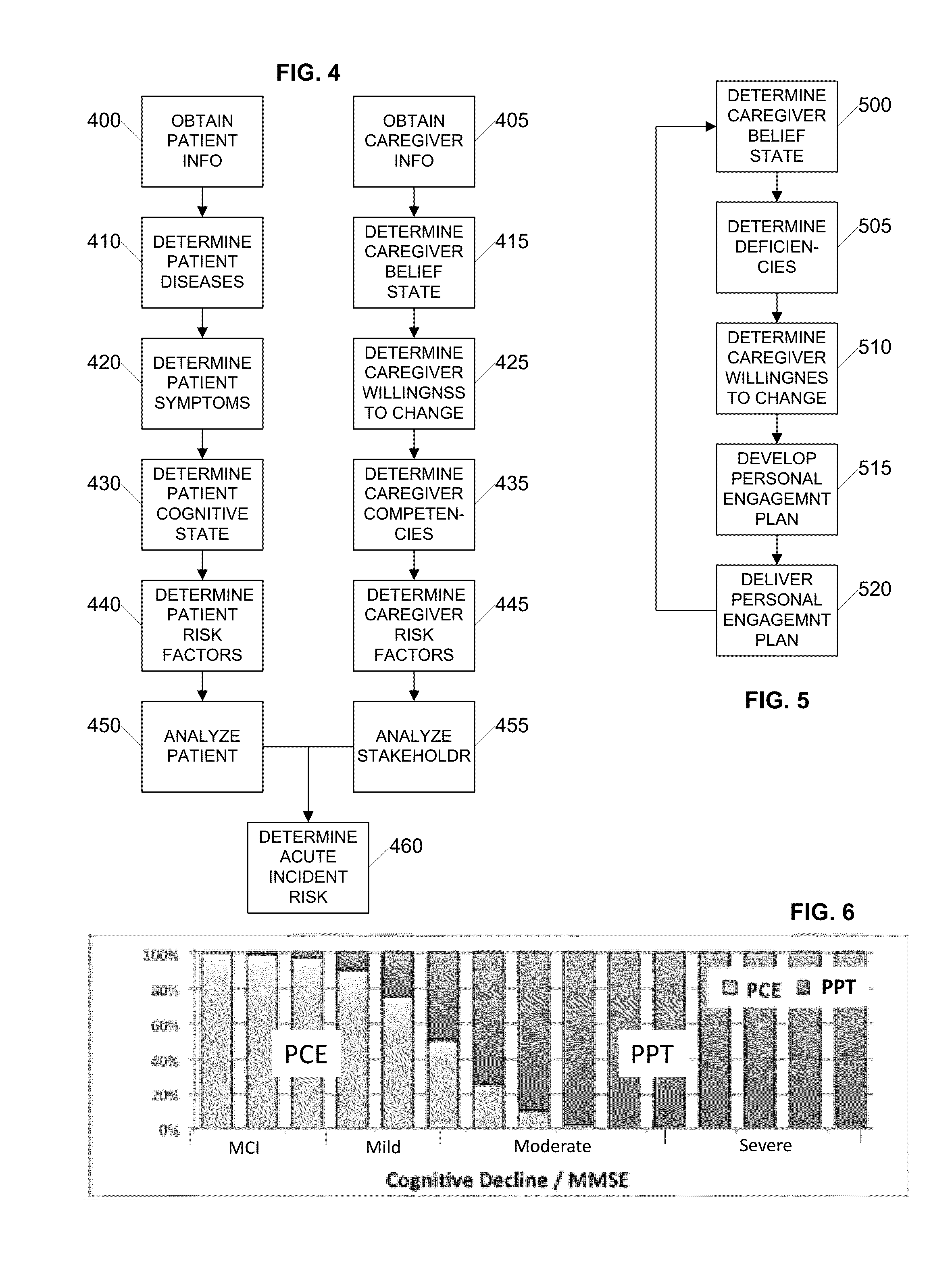System and method for reducing acute incident risk
a technology of acute incident and system and method, applied in the field of system and method for can solve the problems of high risk of acute incident, etc., and achieve the effect of reducing the acute incident risk of dementia patients, reducing acute incident risk, and effective and scalabl
- Summary
- Abstract
- Description
- Claims
- Application Information
AI Technical Summary
Benefits of technology
Problems solved by technology
Method used
Image
Examples
Embodiment Construction
[0020]After reading this description it will become apparent to one skilled in the art how to implement the invention in various alternative embodiments and alternative applications. However, although various embodiments of the present invention will be described herein, it is understood that these embodiments are presented by way of example only, and not limitation. As such, this detailed description of various alternative embodiments should not be construed to limit the scope or breadth of the present invention as set forth in the appended claims.
[0021]Certain embodiments disclosed herein provide for systems and methods for reducing the risk of an acute incident for a patient with dementia. For example, a server uses patient profile information stored in memory to determine a personalized digital patient therapy, in accordance with a personalized patient engagement plan, and sends the personalized digital therapy to a patient device via a network. The patient device administers th...
PUM
 Login to View More
Login to View More Abstract
Description
Claims
Application Information
 Login to View More
Login to View More - R&D
- Intellectual Property
- Life Sciences
- Materials
- Tech Scout
- Unparalleled Data Quality
- Higher Quality Content
- 60% Fewer Hallucinations
Browse by: Latest US Patents, China's latest patents, Technical Efficacy Thesaurus, Application Domain, Technology Topic, Popular Technical Reports.
© 2025 PatSnap. All rights reserved.Legal|Privacy policy|Modern Slavery Act Transparency Statement|Sitemap|About US| Contact US: help@patsnap.com



